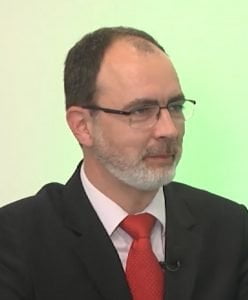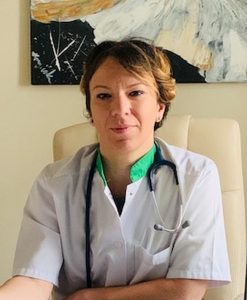Address: 2 Cicio Pop, Timișoara
Phone: 0729104103
E-mail: medfam@umft.ro
Head of the University Clinic
Members
The University Clinic Family Medicine was established in the academic year 2001/2002, under the name of Family Medicine Discipline, aiming to deliver for students the fundamental notions of family medicine and to train resident physicians in the family medicine specialty. Initially, the office of the discipline was located in UMF 2 Building. From the academic year 2018-2019, the didactic activity takes place in the building of the Post Office Palace.
The family medicine internship is organized for the sixth-year students, with teaching in Romanian, English and French, and comprises 14 hours of lecture and 28 hours of practical laboratory. Our discipline also ensures the guidance of the family medicine residents, organizing weekly courses for the respective modules of the first, third and fourth year, according to the residency curriculum. The members of the discipline participate in the examination commissions organized by the Ministry of Health for obtaining the title of specialist or consultant in the specialty of family medicine.
Currently, we do practical and theoretical training for students at Nursing specialization, in Timișoara, Lugoj and Deva.
The field of interest in the research activity is represented by various aspects of preventive medicine and the integrative approach of the patient. Since its establishment, postgraduate courses and symposia have been organized annually for family physicians of Timisoara and west of the country.
Our goal is to provide young and future physicians information about the content of family medicine, which some of them will practice in the future. We make constant efforts to identify factors that improve student education and physician experience.
In 2021, we have established the Centre for Preventive Medicine, which has the following objectives:
- to detect the main causes that can alter the disease prevention process;
- to detect arguments that emphasize the importance of established prevention methods;
- to detect factors that may lead to new perspectives on prevention;
- to increase the proportion of the population with healthy behaviors, especially among those considered to be at risk of disease;
- to increase the level of information of the population about the benefits of adopting a healthy lifestyle and accessing medical services;
- to increase the responsibility of the population for proactive measures for primary, secondary and tertiary prevention, such as combating risk factors, participation in screening examinations and therapeutic education;
- to increase the interest in health promotion among health workers (medical doctors, physiotherapists, nutritionists).
The Family Medicine University Clinic aims to increase the visibility of the specialty of family medicine by providing good information to students regarding the activity of the family doctor, as well as the importance of the involvement of general medical nurses in the activity of the family medicine practice.
The activity with resident doctors aims to emphasize the importance of family medicine in terms of the first contact with the patient, their mediation in the healthcare system and the role of primary healthcare in the healthcare system.
In the post-graduate courses addressed to family medicine specialists and general practitioners, the desire of the Family Medicine University Clinic is to emphasize the importance of prevention in the activity of medical practices and the updating of diagnostic and therapeutic information in terms of curative activity.





